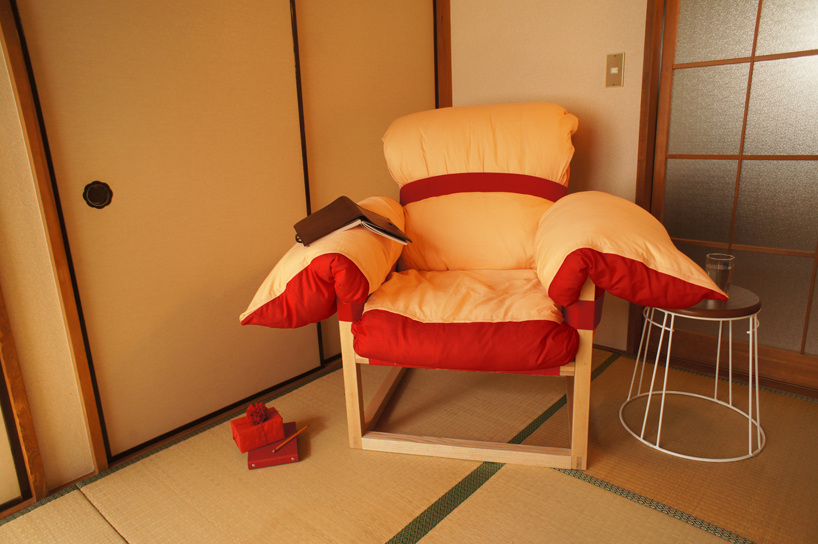
K - Chair by freyja sewell from uk
designer's own words:
kimono – > futon – > rags – > compost – > silk – > kimono
The kimono is a beautiful example of perfect ‘cradle to grave’ design. The traditional kimono is created as a one size fits all garment, allowing it to be used by many people and be passed down and enjoyed from generation to generation. Once the kimono has reached the end of its life it is specifically designed to be easily re-sewn into a futon, the traditional Japanese bedding. Once the bedding it used up the futon is cut into squares for polishing traditional wooden flooring, after this long journey the supple, strong silk is ready to composted, the fibres are perfect for this. This compost is used to fertilise the Japanese garden… perhaps even the mulberry bushes used to feed the silk worms and become a new kimono…
I am in love with this story, I wanted to create a piece of furniture with the same ‘designed for destruction’ aspect of the kimono. One piece of furniture that I have long felt needed to be re-designed to be more sustainably considered is the arm chair. The traditional armchair features a lot of different materials all fixed permanently together, with absolutely no consideration of how it can be disassembled for repair or disposal. Inspired by the beautifully considered kimono I set out to redesign this utilising the kimonos second incarnation, the futon.
My design, the K-Chair, uses futons made in the traditional manner, and can be used to explore multiple types of kimono fabrics for the covers, from the washable light cotton of a yukata to the beautiful damask of Rinzu silk. The K-Chair is fully flatpack and the futons are held in place by wide bands, similar to how a kimono is held in place with the obi. This means the futons can be easily removed for repair or replacement. The covers on the futons are also removable, my design is a different colour either side, so it is possible to change the appearance of your K-Chair by simply reversing the cushions. It is also possible to create different shapes and forms by playing with how the futon cushions are fixed in place to the frame. In this way the K-Chair is adjustable like the original kimono.
The K-Chair is a blank canvas for textile artists and designers to make covers for. By allowing the consumer to change their K-Chair when they wish, the life span of the product will be greatly extended. New and exciting designs can be produced by craftspeople in Japan, supporting traditional kimono fabric production techniques and encouraging future innovation.
I am currently living in Tokyo as the 2014 Daiwa scholar and am very excited to have a chance to learn more about traditional kimonos and futon during my time here. I aim to work with Hisayoshi Nohara to create the first custom futons for my K-Chair.
kimono – delightfully designed for destruction
K-Chair with removable, washable covers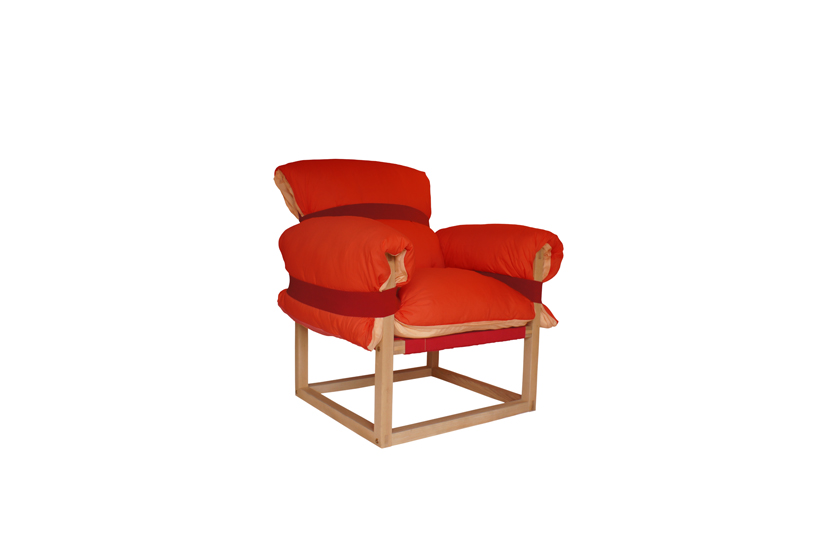
The futon cushions can be compleatly removed from the frame, and reversed to instantly change the appearance of the chair.
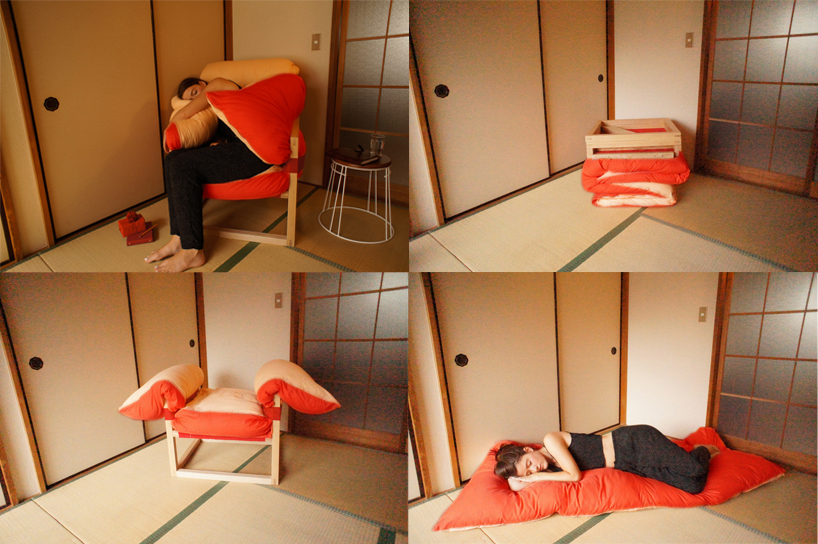
The K-Chair is a flexible piece of furniture, there are lots of different compositions to be explored.
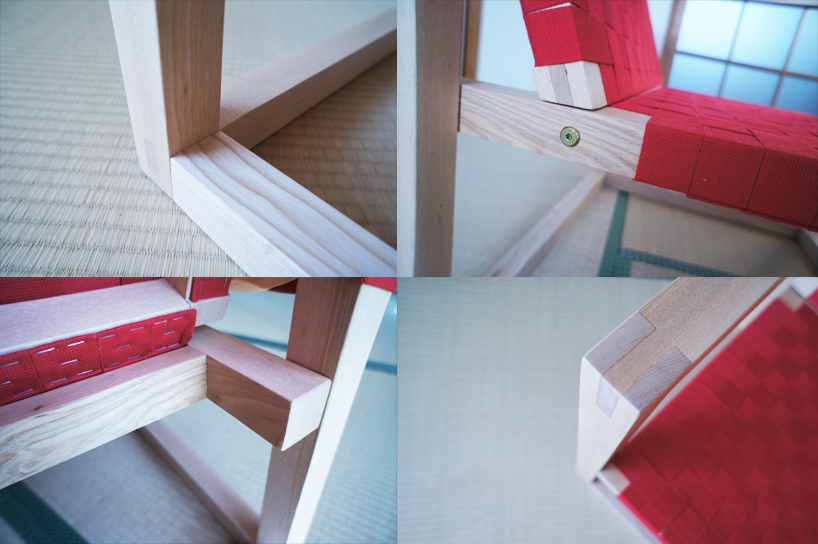
K-Chair frame details
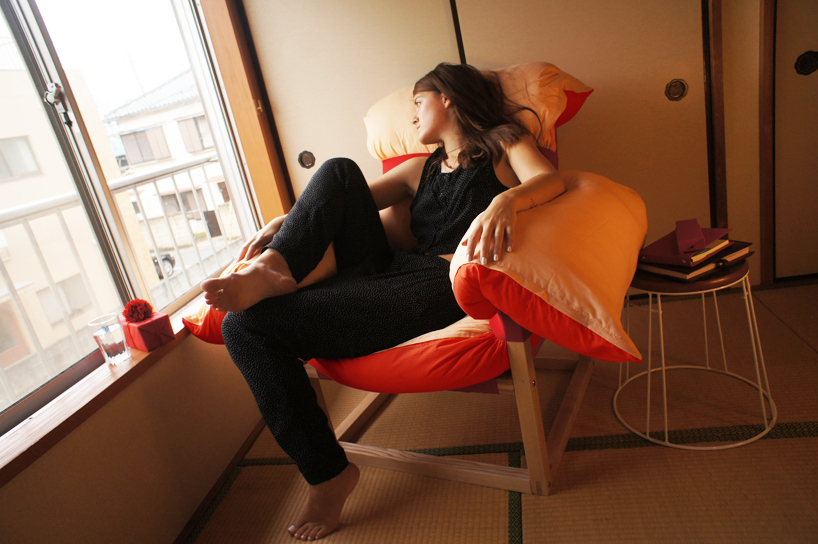
The K-Chair is inspired by the traditional life cycle of the kimono, it can be compleatly disassembled for repair and disposel.
https://www.youtube.com/watch?v=WR6L9JDXXfc&feature=em-upload_owner
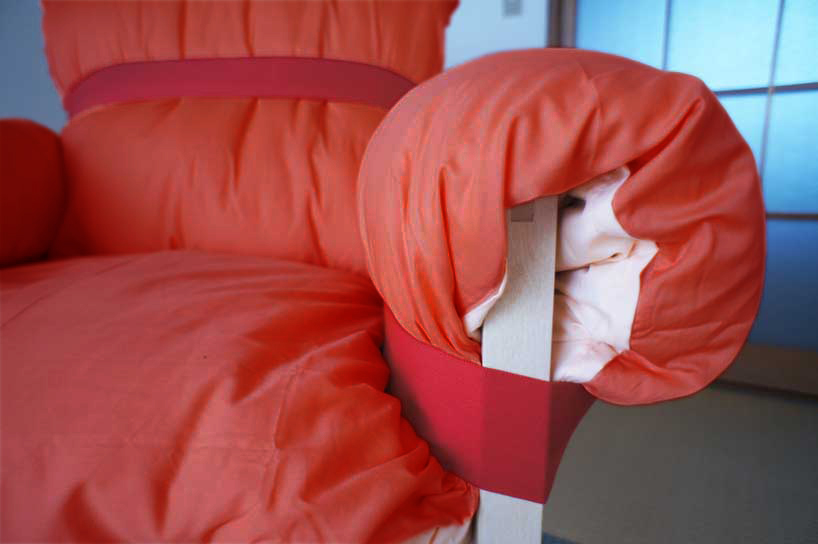
Traditional kimono fabric makers and artists can make thier own special edition covers for the K-Chair futons.